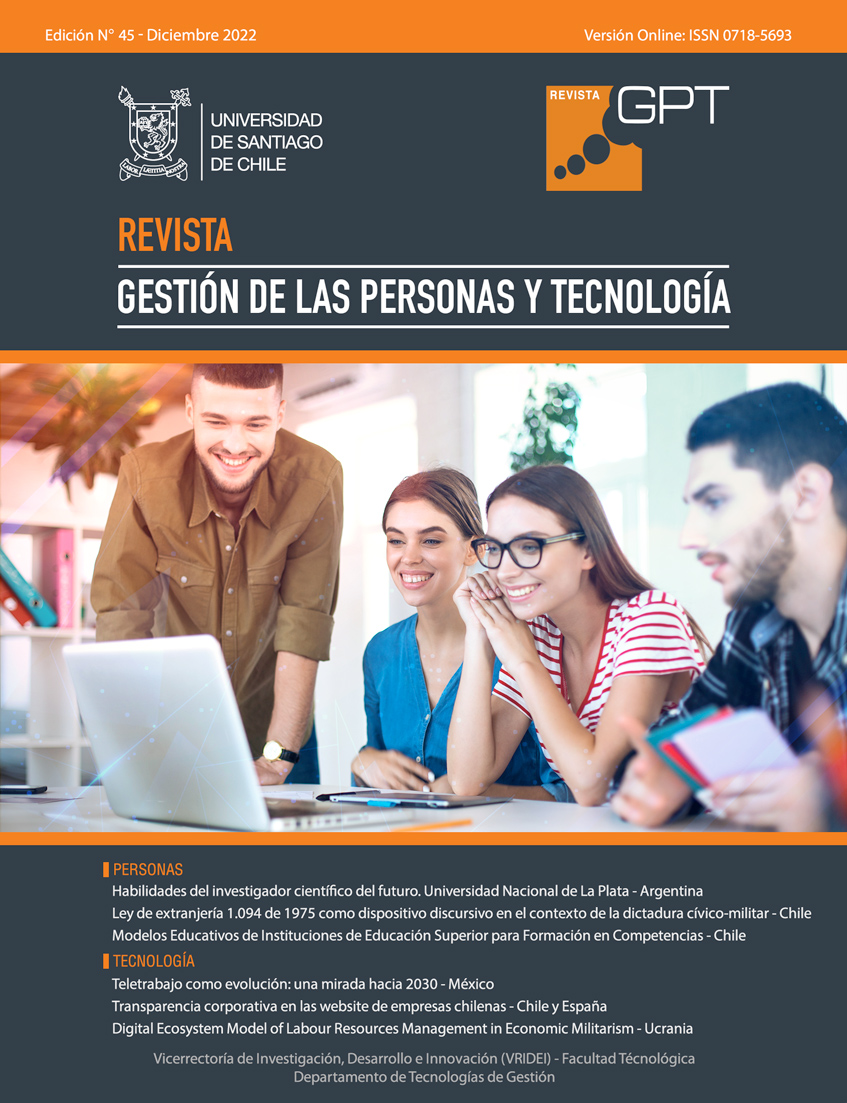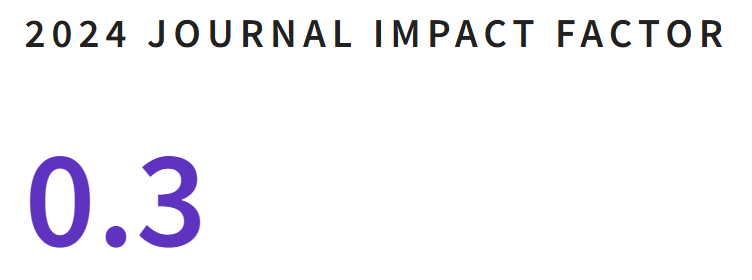Telework as an evolution of economic and production relations: a look towards 2030
DOI:
https://doi.org/10.35588/gpt.v14i45.5900Keywords:
Employment, Innovation, PerformanceAbstract
The evolution of teleworking has occurred along with the development in the last forty years. Its relationship with increasingly globalized work environments demands that this practice be analyzed from the perspective of the 2030 Agenda and, above all, what kind of economic, labor and even personal and family consequences of the workers will they have. The objective of this document is to highlight the relevance of teleworking as a work modality through secondary data for the promotion of productivity. A documentary research was used based on statistical information made up of historical series obtained from different official sources, such as: National Institute of Statistics, Geography and Informatics in Mexico, Telework.gov of the US government, Eurostat in Europe, among others. The statistical information is from the period 2013 to 2020. The results show that the practice of teleworking generates an improvement in productivity in organizations of various characteristics. It also promotes better wages, promotes the level of commitment between workers and employers in such a way that labor ties and the bond between these actors is reinforced when productivity increases. Finally, it should be noted that, in countries such as Mexico or Argentina, which recently arrived at the widespread implementation of teleworking, legislation has been produced that seeks to regularize its practice, which can increase, jointly by companies and workers, levels of productivity and job satisfaction as long as the balance between the interests of those who demand the work of their collaborators and those who carry it out is taken care of. In addition, another challenge that these countries must face are the technological advances that imply greater investment in R&D, infrastructure and training of the main organizational actors.
Downloads
References
AMITI. (2018). Teletrabajo en la Ciudad de México. Guía para la innovación, la productividad y la mejora de la calidad de vida. https://guias.amiti.org.mx/guias/Teletrabajo_en_la_Ciudad_de_Mexico.pdf
Belli, G. (23 de 09 de 2019). These Telecommuting Stats May Surprise You. Obtenido de Payscale: https://www.payscale.com/career-news/2019/09/these-telecommuting-stats-may-surprise-you
Commission, E. (09 de 11 de 2020). European Semester Thematic Factsheet. Obtenido de Services: https://ec.europa.eu/info/sites/info/files/european-semester_thematic-factsheet_services_en.pdf
Comisión Económica Para América Latina. (CEPAL, 2020). CEPAL propone garantizar y universalizar la conectividad y asequibilidad a las tecnologías digitales para enfrentar los impactos del COVID-19. Consultado en: https://www.cepal.org/es/comunicados/cepal-propone-garantizar-universalizar-la-conectividad-asequibilidad-tecnologias
Cordova Olivarria, S. (2003). El teletrabajo, la tecnología en la creación de nuevas relaciones de trabajo y su inobservancia por la ley laboral mexicana. Cuarto congreso nacional de Estudios del trabajo. http://www2.izt.uam.mx/sotraem/Documentos/Documentos/Amet2003/templates/res/tema2/SERGIO%20CORDOVA.pdf
Daft, R. y. (1986). "Organizational information requirements, media richness and structural design". Management Science, 554-571.
De la Morena Carra, G. (13 de junio de 2022). Así Contribuye el Teletrabajo a Mejorar el Planeta y Crear un Mundo más Justo, Feliz y Sostenible. Obtenido de Innovando by Expocontact: https://innovan.do/contenidos/articulos/asi-contribuye-el-teletrabajo-a-mejorar-el-planeta-y-crear-un-mundo-mas-justo-feliz-y-sostenible/
Europea, C. (2020). Telework in the EU before and after the COVID-19: where we were. Bruselas: Joint Research Centre.
Fried, Y. y. (1987). The Validity Of The Job Characteristics Model: A Review And Meta†Analysis. Personnel Psychology, 287- 322.
Garrett, K. y. (01 de 02 de 2007). Which Telework? Defining and Testing a Taxonomy of Technology-Mediated Work at a Distance. Obtenido de https://journals.sagepub.com/doi/10.1177/0894439306293819
Gil-Monte, P. R. (2017). Influencia de las tecnologías de la información y de la comunicación (TIC) sobre la salud de los trabajadores. P.9 Valencia. http://www.viu.es/investigacion/informes/empresa-y-derecho/influencia-las-tecnologias-la-informacion-la-comunicacion-tic-la-salud-los-trabajadores/#cf6_field_8
Global Workplace Analytics (2021), "Work From Home Experience Survey Results". Disponible en: https://globalworkplaceanalytics.com/global-work-from-home-experience-survey
Gómez-Lee, M. I. (2019). Agenda 2030 de desarrollo sostenible: Comunidad epistémica de los límites planetarios y cambio climático. Universidad Externado de Colombia: Ópera.
Hackman J.R., O. G. (2007). How job characteristics theory happened". Oxford: Ken G. Hill and Michael A. Oxford Univerity Press.
Herzberg, F. M. (1959). The Motivation to Work. Nueva York: Wiley.
Hill, J. B. (2006). Influences of The Virtual Office on Aspects of Work and Work/Life Balance. Personnel Psychology, 667-683.
INEGI (2021). Directorio Nacional de Unidades Económicas. Consultado en: https://www.inegi.org.mx/app/mapa/denue/default.aspx
Labs, O. (01 de 11 de 2020). State fo Remote Work. Obtenido de Global Workplace Analytics: https://www.owllabs.com/hubfs/website/sorw/2020/owl-labs_sorw-2020_report-download_FINAL_07oct2020.pdf
Management, U. S. (24 de 06 de 2018). What is Telework? Obtenido de https://www.opm.gov/FAQs/QA.aspx?fid=b48bf83b-440c-4f1e-a88c-3cdc9d802ac8&pid=75346675-3b92-4aec-831d-58cf5b0e86d2&result=1
Mariano, R. (13 de junio de 2022). Trabajo Remoto, ¿Un Animal en Peligro de Extinción? Obtenido de Innovando by Expocontact: https://innovan.do/cultura-y-personas/trabajo-remoto-un-animal-en-peligro-de-extincion/
Martínez, J. (2012). ¿Cuáles son las dificultades reales del teletrabajo para el empleado? Pymes y Autónomos. Consultado en: ¿Cuáles son las dificultades reales del teletrabajo para el empleado? (pymesyautonomos.com)
México, G. d. (12 de enero de 2021). Entra en vigor reforma que regula el teletrabajo en México. Obtenido de BOLETÍN Número 002/2021: https://www.gob.mx/stps/prensa/entra-en-vigor-reforma-que-regula-el-teletrabajo-en-mexico?idiom=es
México, G. d. (29 de diciembre de 2021). Se supera ya el millón de trabajadores consultados en la legitimación de sus contratos colectivos. Obtenido de COMUNICADO CONJUNTO 036/2021: https://www.gob.mx/stps/prensa/se-supera-ya-el-millon-de-trabajadores-consultados-en-la-legitimacion-de-sus-contratos-colectivos?idiom=es
Moliner, M. (2007). Diccionario de uso del español. 3era edición, España, Gredos, 770-771.
Montes Cató, J. (2011). El trabajo en la sociedad de la información: desafíos para el movimiento obrero. Kairos Revista de Temas Sociales, 27.
Montes Cató, J. (2007). Dominación en los espacios de trabajo y formas de expresión del conflicto: las nuevas generaciones de trabajadores frente a las políticas gerenciales XXVI Congreso de la Asociación Latinoamericana de Sociología. Asociación Latinoamericana de Sociología, Guadalajara.
Montaudon- Tomas, C. P.-L. (2020). The Effects of Remote Work on Family Relationships: Examples from Academia. En E. N. Abe, Future of Work, Work- Family Satisfaction, and Employee Well-Being in the Fourth Industrial Revolution (págs. 17-39). Natal: IGI Global.
OECD. (2021). Tackling the mental health impact of the COVID-19 crisis: An integrated, whole-of-society response. Paris: Organization for Economic Cooperation and Development.
Organization, I. L. (2021). Healthy and Safe Telework. Ginebra: United Nations.
Pandey, E. (29 de septiembre de 2020). Telework is exacerbating global inequality. Obtenido de Axios: https://www.axios.com/telework-world-economy-jobs-coronavirus-91b1c7cf-96d7-4909-99e9-187794498028.html
Psicólogos en Línea (2020). "Teoría Característica del Trabajo en Teoría Psicológica del Trabajo". Disponible en: https://psicologosenlinea.net/2551-teoria-caracteristica-del-trabajo.html
Reisinger, Holger y Dane Fetterer. (2021). "Forget Flexibility. Your Employees Want Autonomy". Harvard Business Review. Disponible en: https://hbr.org/2021/10/forget-flexibility-your-employees-want-autonomy
Telecom, A. (14 de 01 de 2016). The History of Telecommuting. Obtenido de https://www.alliedtelecom.net/the-history-of-telecommuting/
Torraco, R. (2005). "Work design theory: A review and critique with implications for human resource development. Human Resource Development Quarterly, 16, 85-109.
Trist, E. L., & Bamforth, K. W. (1951). Some Social and Psychological Consequences of the Longwall Method of Coal-Getting: An Examination of the Psychological Situation and Defences of a Work Group in Relation to the Social Structure and Technological Content of the Work System. Human Relations, 4(1), 3–38. https://doi.org/10.1177/001872675100400101










